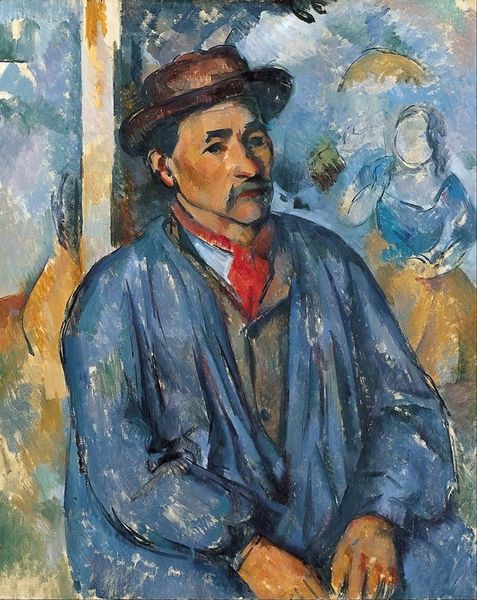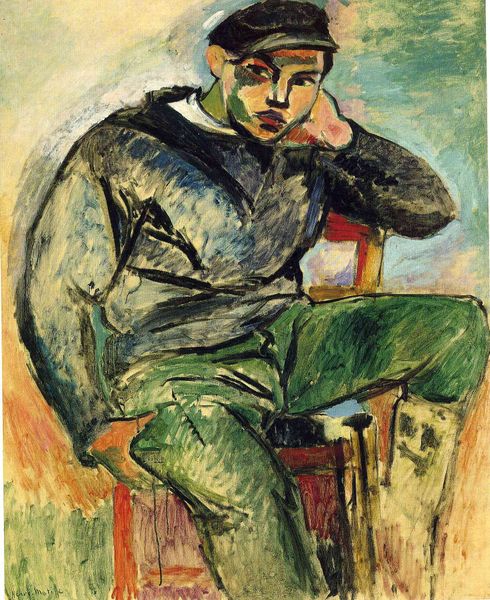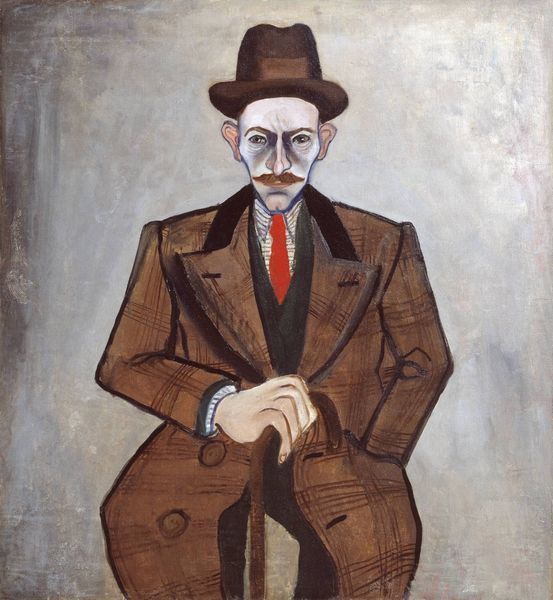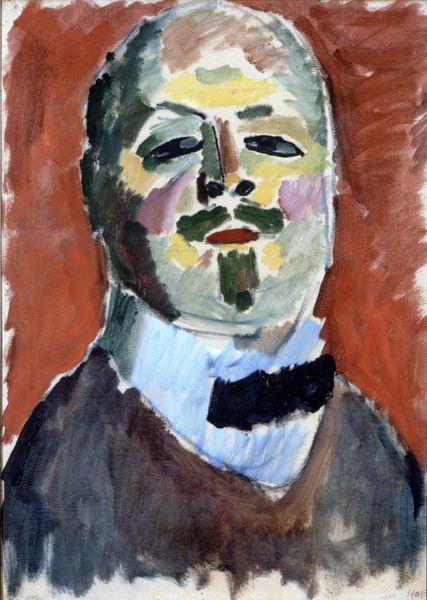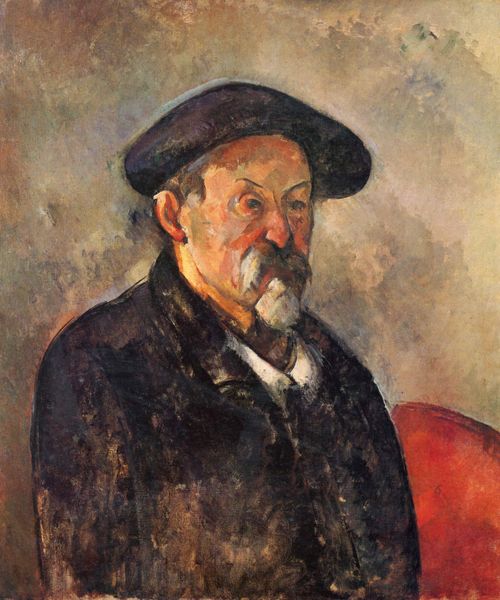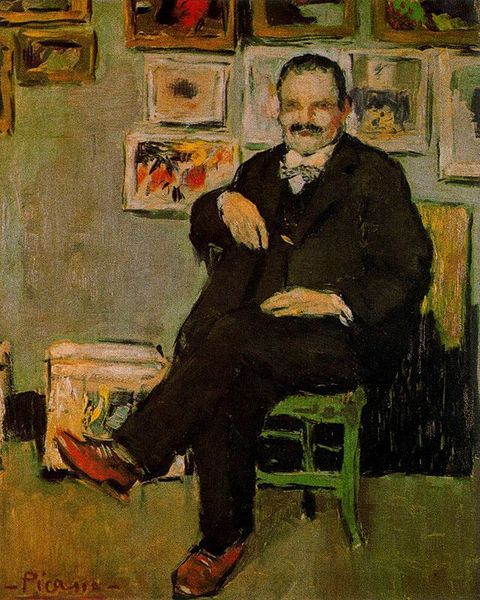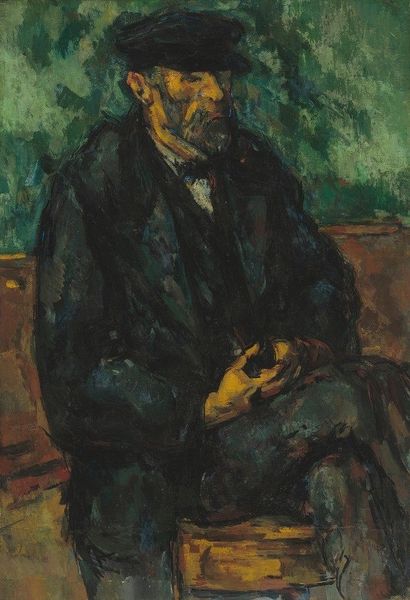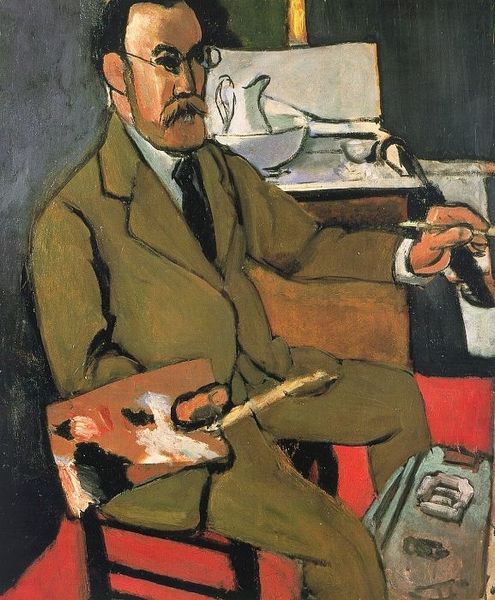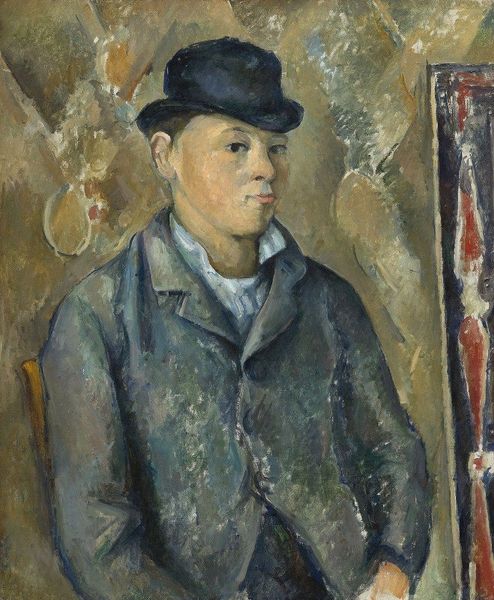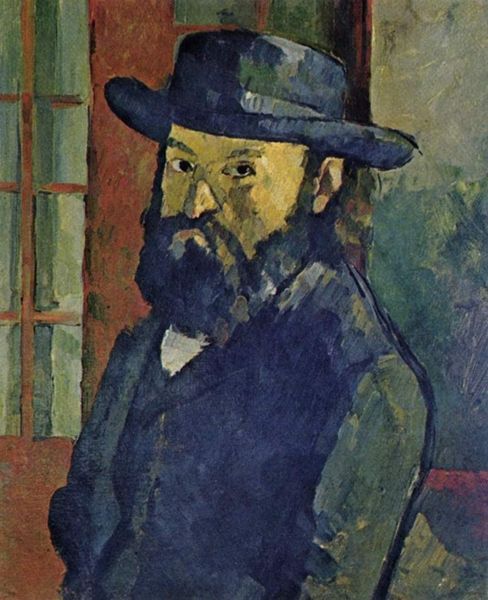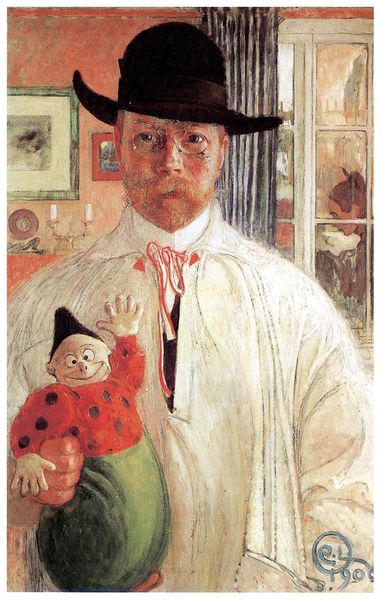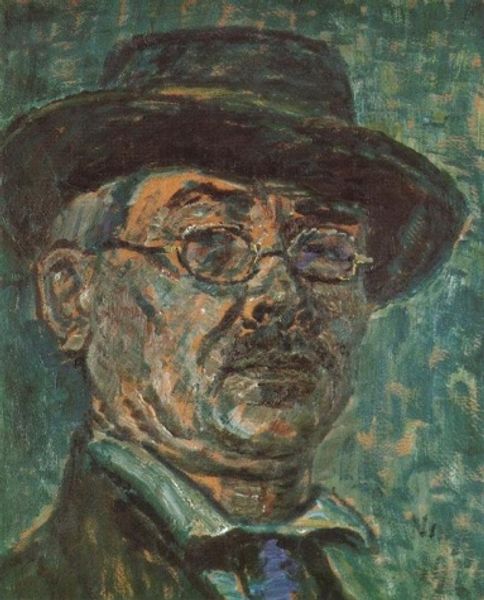
oil-paint, impasto
#
portrait
#
oil-paint
#
oil painting
#
impasto
#
post-impressionism
#
portrait art
Dimensions: 65 x 51 cm
Copyright: Public domain
Curator: Ah, look at this wonderful explosion of colour in Van Gogh's "Portrait of Père Tanguy," created in 1888. I am so moved! Editor: It’s quite striking, isn't it? At first glance, the Japanese prints in the background almost overwhelm Tanguy himself. There's a fascinating tension there, I think. Curator: Absolutely! The backdrop is not mere decoration; it is very personal to him. Tanguy was, in effect, Van Gogh's paint supplier, but, far more importantly, one of the first to purchase Van Gogh’s artworks, to trade painting supplies for his work and believed in his genius—one might call him a merchant of dreams. Editor: A fascinating insight. Placing Tanguy against that background reads as Van Gogh aligning him with an avant-garde, worldly sensibility. What is truly impactful is that he uses these artworks to say something far more complex than the subject itself, by creating an almost autobiographical picture. How radical of Van Gogh. Curator: Yes, it is far more than simply "placing". If one examines the artwork’s materials and his expressive impasto brushstrokes, we feel that it becomes almost tactile—he's imbuing him with colour, personality and his essence. The kind eyes, too. What emotion is there! Editor: You feel a warmth radiating from the canvas, definitely. Beyond that, it raises some intriguing questions about the consumption and appropriation of Japanese art by Western artists during that era. We might need to unpack that more. Curator: The exchange wasn't purely one-way, of course. There was mutual inspiration to be gained! And in all honesty, beyond art history itself, this picture strikes to my soul, you know, to one's emotions! Editor: Yes, and thinking about its legacy for modern identity studies makes this portrait extremely interesting and a must-see, without a question. It urges us to question whose stories get told and how they are remembered, that, in its core, are the portrait’s questions for us.
Comments
No comments
Be the first to comment and join the conversation on the ultimate creative platform.

